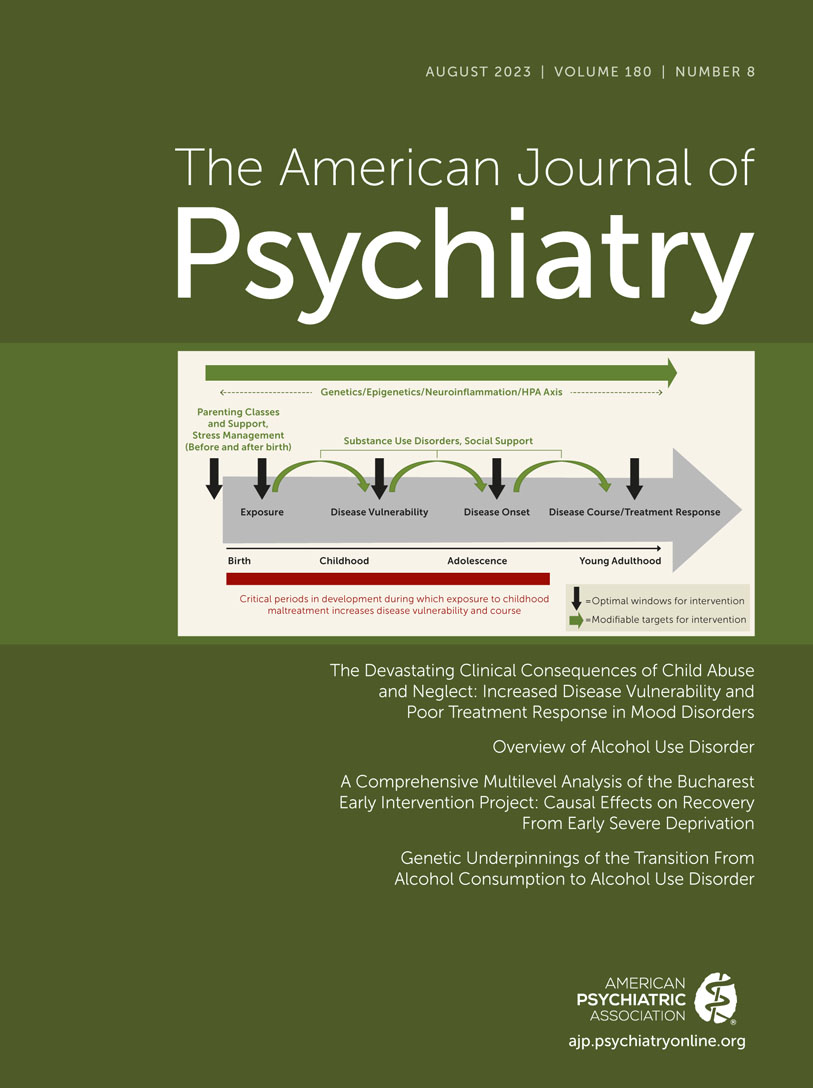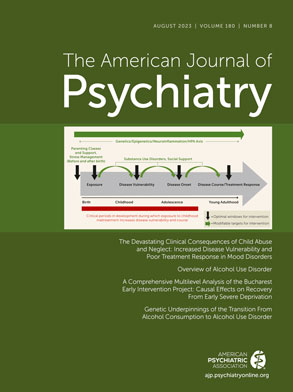For more than two decades, the Bucharest Early Intervention Project (BEIP) has seeded change in clinical practice, research, and policy across the world. In this issue, King and colleagues (
1) present a masterful overview of nearly 20 years of work on the BEIP, but there is also an important hidden message, namely, that rigorous science can overturn even the most toxic and ill-judged practices—in this case, the dreadful institutions in which abandoned children in Romania were placed during the Ceaușescu regime.
How did a modest-sized randomized controlled trial stimulate such profound change? In a 2009 trip to Bucharest, on a Winston Churchill Travelling Fellowship, I witnessed this transformation firsthand (
2). I heard, from Bogdan Simeon, Director of the Society for Romanian Abandoned Children, and Gabriella Coman, former Secretary of State for Child Protection, about the courageous decision to invite a group of American scientists to come to Romania to test the effectiveness of foster care—at that time a new practice in Romania. I heard from Bogdan Paniat, Secretary of State for Adoption, that the BEIP continued to influence his drive to reduce bureaucracy in facilitating permanent family-based placements for abandoned children (
2). By the time of my 2009 visit to Bucharest, less than 10 years after the randomized controlled trial began, Romania already had a foster care system that was well developed and was in many ways similar to the system in my native Scotland. The ability of one country to make such positive change, even when going through a challenging post-dictatorship transformation, has no doubt inspired many other countries across the world to make similar profound changes. Ten years later, in 2019, 265 organizations, including the United Nations, endorsed recommendations to progressively close institutions across the world in favor of family-based care (
3).
Beginning in 2001, the BEIP team randomized 136 preschool children into either remaining in institutional care or into newly developed high-quality foster care (
4). The randomized controlled trial continued to 54 months, with assessments of cognitive functioning, physical growth, brain electrical activity, and symptoms of five forms of psychopathology (reactive attachment disorder, disinhibited social engagement disorder, attention deficit hyperactivity disorder [ADHD], and internalizing and externalizing symptoms) at ages 30, 42, and 54 months. At this stage the trial ended, and then more than 75% of participants were followed up at ages 8, 12, and 16–18 years. In the analysis of the study data presented in this issue, King and colleagues used an intent-to-treat approach to examine the effects on 136 institutionalized Romanian children of being randomly allocated to either foster care or care as usual (which meant initially remaining in the institution). Overall, 130 participants provided 7,088 observations between the 30-month and 16- to 18-year follow-up waves across four key domains: cognitive functioning, physical growth, brain electrical activity, and psychopathology. The use of multilevel models allowed the team to make good use of all available data.
The overall effects of the foster care intervention were stark: there was a positive effect of foster care on IQ, physical growth, and psychopathology, specifically reactive attachment disorder, disinhibited social engagement disorder, and internalizing symptoms. The importance of these findings cannot be overstated—there can no longer be any justification for choosing institutional care over foster care for young children if development of good quality foster care is possible. Since foster care systems are generally much more cost-effective than institutional care–based systems, policy makers globally should be supported to develop foster care–based care systems wherever possible (
5).
One important negative finding of the study is the lack of an effect of foster care on ADHD. On that visit to Romania in 2009, many of those I interviewed about institutionalization under Ceaușescu told of the pressures placed on families (especially Roma families) to abandon their children, because racism and stigma (
6) created doubts about their ability to safely raise their children. It is possible that parents with ADHD might have been more likely to impulsively succumb to such pressures. Since ADHD is strongly heritable, more children with ADHD might be placed in institutions compared to the general population, so the higher levels of ADHD found in institutionalized samples could be a result of structural factors rather than of the negative effects of institutionalization. Resolving negative effects of institutionalization by placement in foster care might be an ineffective treatment for ADHD if institutionalization did not cause the ADHD in the first place. There is also emerging evidence that parents or carers of children with severe ADHD symptoms can become highly stressed (
7) and, in foster carers, this could result in placement breakdown and poorer mental health outcomes.
Thus far, the BEIP remains the only randomized controlled trial of foster care, and it is likely that there will never be another one. This is because the findings are so unequivocal in favor of foster care over severe early deprivation that trialists will never again be in the position of equipoise that justifies randomization.
Unfortunately, not all foster care across the world is of the quality provided in the BEIP, where supervision was provided for carers by experts in infant mental health and where every effort was made to support the stability of foster placements. In many countries, including the United Kingdom, foster care is not always of this high quality. In particular, foster carers are not always supported to provide placements that will become permanent if the birth family is unable to resume the care of the child, which means that changes of placement and the breaking of attachments are built into the system (
8). This is particularly sad when the findings of this study—that placement breakdown is associated with poorer outcomes—are considered. As the authors point out, this design cannot tease out the directions of causality between placement breakdown and poor outcomes: although an unplanned breakdown of a foster placement is undoubtedly traumatic for a child, it is also possible that children with high levels of psychopathology were more challenging to care for and that this might have led to placement breakdown. However, discussions about directions of causality are in some senses immaterial—the important point is that foster carers require high-quality supervision and support because it is crucial that placement breakdowns be avoided wherever possible.
Sadly, many countries across the world have still not got the message of the BEIP (
9). Even though child care policy in Romania is unrecognizable compared to the pre-BEIP era and has, thanks to rigorous science, transformed into a modern system, changing global policy will take longer. This paper deserves to be read by policy makers across the world, to facilitate a continual reduction in the number of young children reared in neglectful circumstances, so that more children globally can reach their full potential.
Acknowledgments
The author thanks Robin Young, from the Robertson Centre for Biostatistics, for contributing a statistical overview of the paper.

